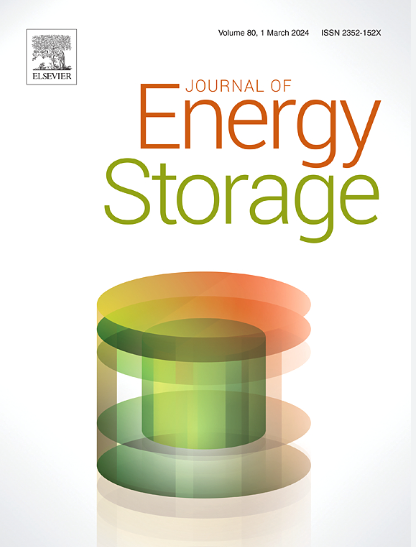State of charge (SOC) estimation in electric vehicle (EV) battery management systems using ensemble methods and neural networks
IF 8.9
2区 工程技术
Q1 ENERGY & FUELS
引用次数: 0
Abstract
Battery management systems (BMS) are critical in ensuring the performance, reliability, and safety of battery systems through accurate estimation of the State of Charge (SOC) of batteries. As on-board SOC estimation, together with other functionalities by the BMS can result in its high design complexity, high cost, and high energy consumption, this study explores a data-driven estimation of a Lithium battery state of charge (SOC) while discharging, using simple linear regression, ensemble methods, and neural networks respectively to ensure an accurate low time complexity solution as compared to existing methods. A known dataset of 835,248 records from Li [NiMnCo]O2 (H-NMC)/Graphite + SiO battery was used to train and test each model to determine the best fit. This study determined that neural networks are the models of choice for SOC prediction instead of linear and ensemble regression. Still, also the wide tri-layered feed-forward neural network proposed in this study showed great results by having a maximum error percentage of less than 1 %, and a mean squared error (MSE) of 1e-08, which is similar to or better than what is obtainable in other more complex deep neural network variants such as the Gated recurrent unit recurrent neural network (GRU-RNN), with an MSE of 1e-06 and similar load classifying neural network models with an error percentage of 3.8 %. The FFNN proposed in this study also has the advantage of having lower technical and time complexity computational costs required for active fault estimation in thin client devices such as a BMS.
求助全文
约1分钟内获得全文
求助全文
来源期刊

Journal of energy storage
Energy-Renewable Energy, Sustainability and the Environment
CiteScore
11.80
自引率
24.50%
发文量
2262
审稿时长
69 days
期刊介绍:
Journal of energy storage focusses on all aspects of energy storage, in particular systems integration, electric grid integration, modelling and analysis, novel energy storage technologies, sizing and management strategies, business models for operation of storage systems and energy storage developments worldwide.
 求助内容:
求助内容: 应助结果提醒方式:
应助结果提醒方式:


